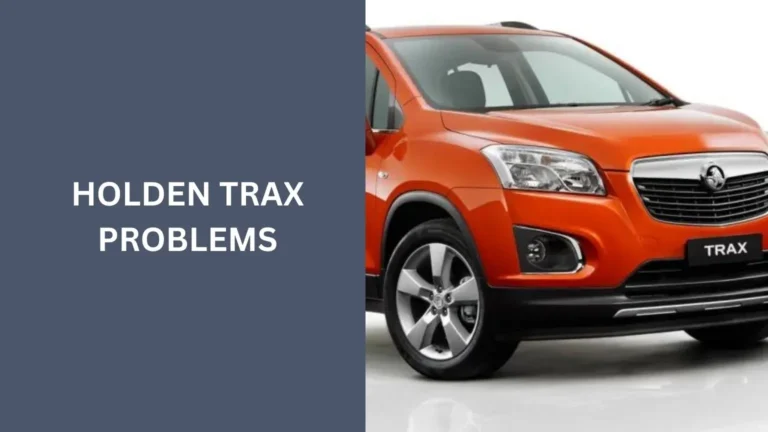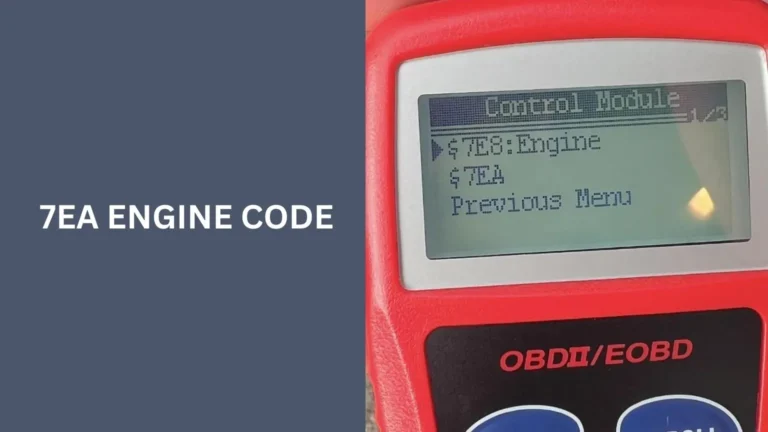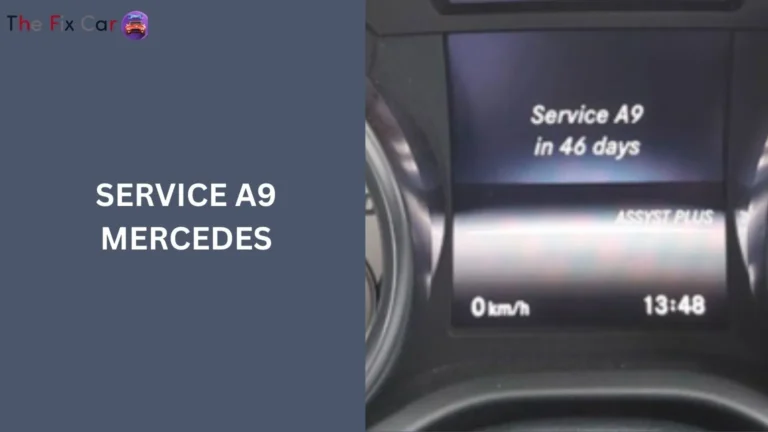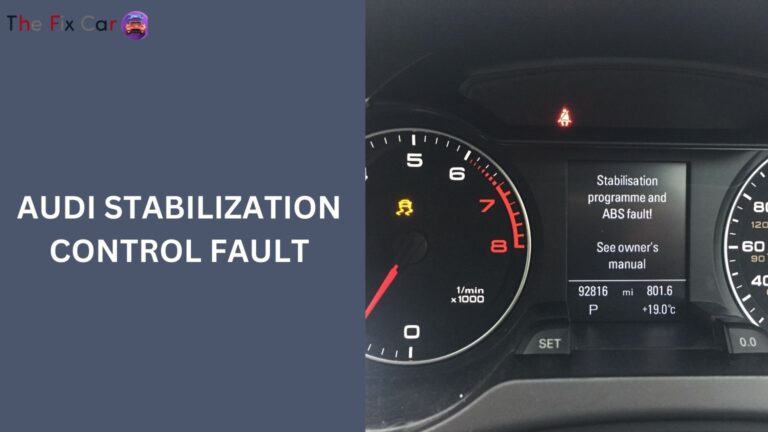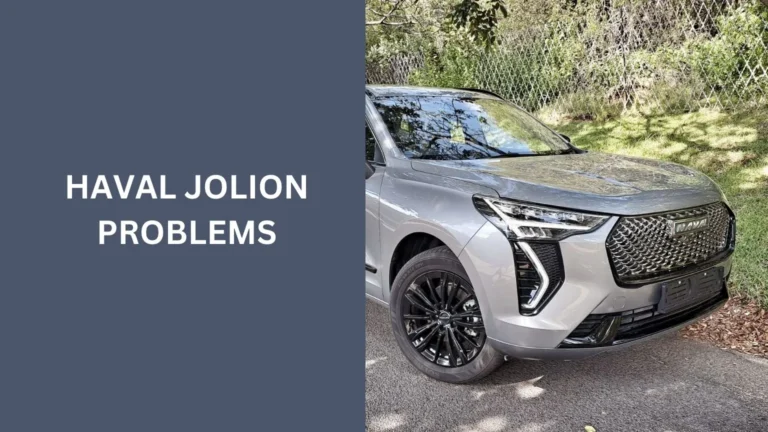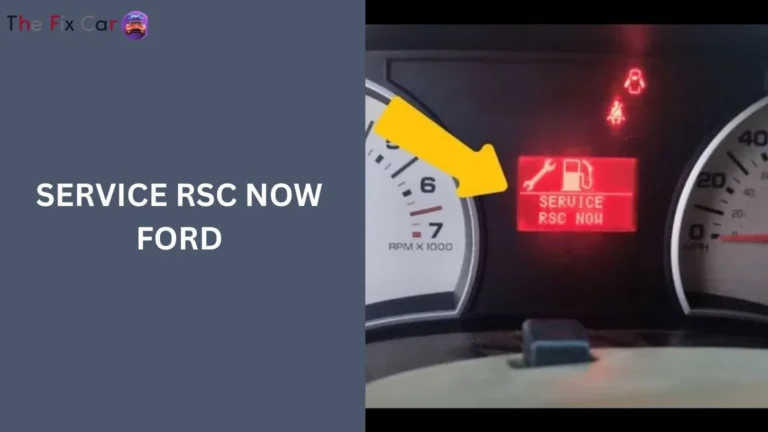Code U1000 (Meaning, Causes & Fixing) of 2024
If you’ve ever faced the dreaded check engine light, you know how frustrating it can be. One of the more perplexing codes you might encounter is Code U1000.
This code indicates a communication problem within the vehicle’s network. But what does that mean, and how can you fix it? Let’s dive into the nitty-gritty details.
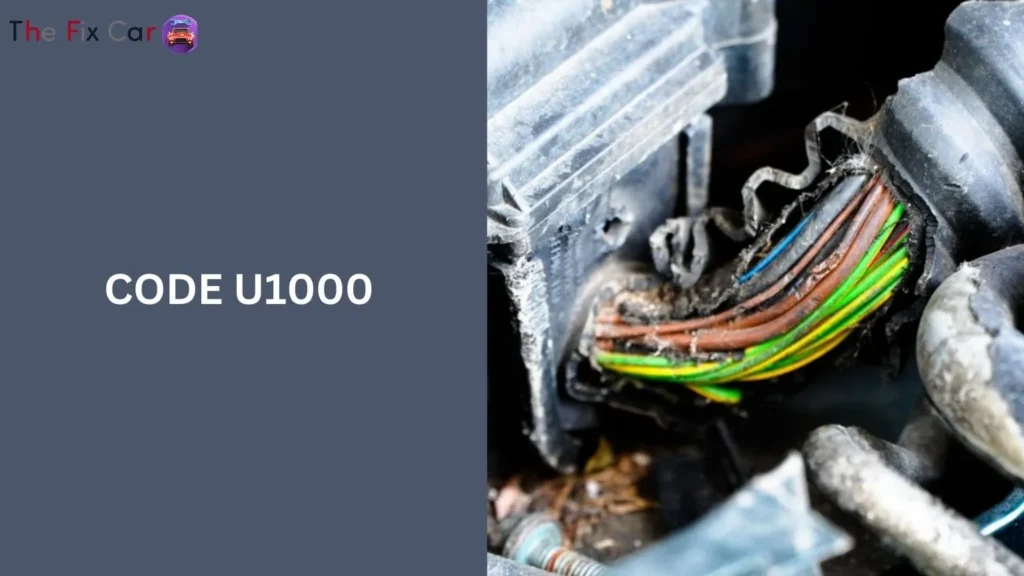
Understanding Code U1000
Code U1000 is a diagnostic trouble code (DTC) that signifies a communication malfunction within the vehicle’s Controller Area Network (CAN).
This network is crucial for the seamless operation of various control modules, which communicate to ensure your car runs smoothly.
Common Causes of Code U1000
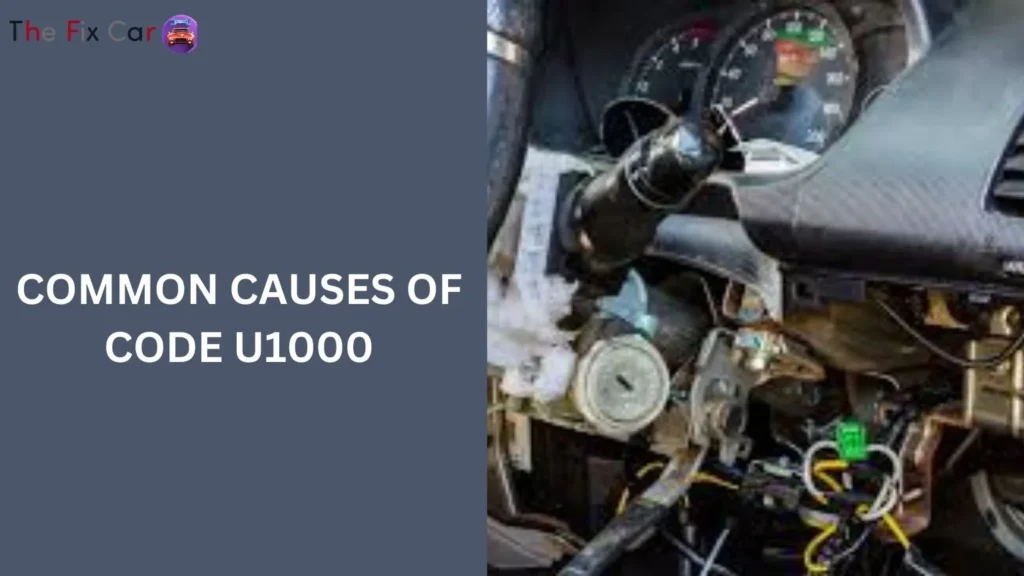
Code U1000 is a diagnostic trouble code that indicates a communication malfunction within the vehicle’s Controller Area Network (CAN).
This issue can stem from various causes, each affecting the network’s ability to transmit information between control modules effectively.
Understanding these common causes can help in diagnosing and fixing the problem efficiently.
Faulty Wiring
One of the primary causes of Code U1000 is faulty wiring. The CAN network relies on a series of wires to connect the various control modules.
If these wires become damaged, corroded, or loose, it can disrupt the communication between modules.
- Damage: Physical damage to the wiring, such as cuts or abrasions, can break the connection and prevent signals from being transmitted.
- Corrosion: Exposure to moisture and other elements can lead to corrosion of the wires, weakening the connection and causing communication issues.
- Loose Connections: Over time, connections can become loose due to vibrations and wear and tear, leading to intermittent communication failures.
Malfunctioning Control Modules
The control modules themselves can also be the source of the problem. Each module in the network plays a specific role, and if one malfunctions, it can disrupt the entire system.
- Hardware Failure: Components within a control module can fail due to age, heat, or manufacturing defects, leading to communication breakdowns.
- Software Glitches: Sometimes, the software running on the control modules can have bugs or become outdated, causing communication issues.
Network Communication Issues
The CAN network is complex and requires seamless communication between all connected modules. Any disruption within this network can trigger Code U1000.
- Interference: Electrical interference from other components or external sources can disrupt the signals within the CAN network.
- Network Configuration: Incorrect network configurations or conflicts between modules can lead to communication errors.
- Physical Damage: Damage to the network itself, such as a broken connector or damaged bus, can prevent proper communication.
Electrical Problems
Electrical issues can also be a common cause of Code U1000. These problems can arise from various sources and affect the entire network.
- Battery Issues: A weak or failing battery can cause voltage drops, affecting the CAN network’s ability to function correctly.
- Alternator Problems: If the alternator does not provide a stable voltage supply, it can lead to communication errors within the network.
- Grounding Issues: Poor grounding can cause electrical noise and interfere with the signals being transmitted through the CAN network.
Symptoms of Code U1000
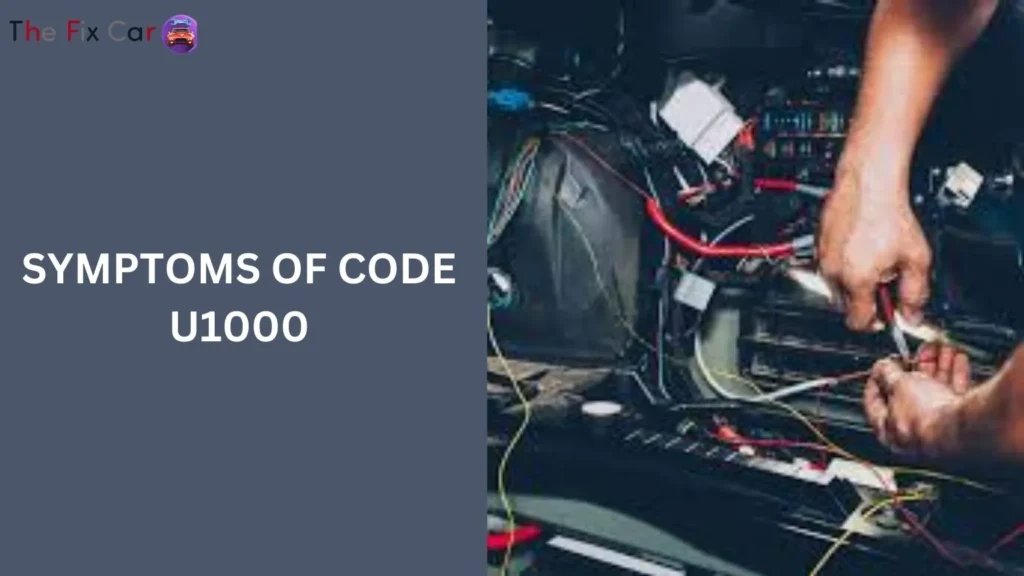
When your vehicle’s Controller Area Network (CAN) encounters communication problems, it can trigger Code U1000.
Recognizing the symptoms associated with this diagnostic trouble code is crucial for timely diagnosis and repair. Here are some common signs that your vehicle might be experiencing Code U1000.
Check Engine Light
The most immediate and obvious symptom of Code U1000 is the illumination of the Check Engine Light (CEL) on your dashboard. This light serves as a general indicator that something is wrong with your vehicle’s systems.
- Persistent Light: The CEL may stay on constantly.
- Intermittent Light: The light may turn on and off sporadically, indicating intermittent communication issues.
Erratic Behavior of Electronic Systems
When the CAN network is compromised, various electronic systems in your vehicle may behave unpredictably. This can affect systems that rely on accurate communication between control modules.
- Malfunctioning Gauges: The speedometer, tachometer, fuel gauge, and other instrument cluster gauges may display incorrect readings or fluctuate erratically.
- Faulty Lights: Dashboard warning lights, such as ABS, traction control, and airbag lights, may illuminate without a clear cause.
Vehicle Performance Issues
Code U1000 can lead to noticeable changes in how your vehicle drives, as the control modules responsible for managing engine and transmission functions might not be communicating properly.
- Poor Acceleration: The vehicle may struggle to accelerate smoothly.
- Stalling: The engine might stall unexpectedly or have difficulty starting.
- Reduced Power: You might experience a loss of power or sluggish performance.
Communication Loss with Diagnostic Tools
When attempting to diagnose the problem with a scan tool, you may encounter issues connecting to the vehicle’s control modules. This loss of communication is a direct symptom of Code U1000.
- No Response: The diagnostic tool may fail to establish a connection with one or more control modules.
- Partial Data: The tool might only retrieve partial data, indicating communication breakdowns.
Diagnosing Code U1000
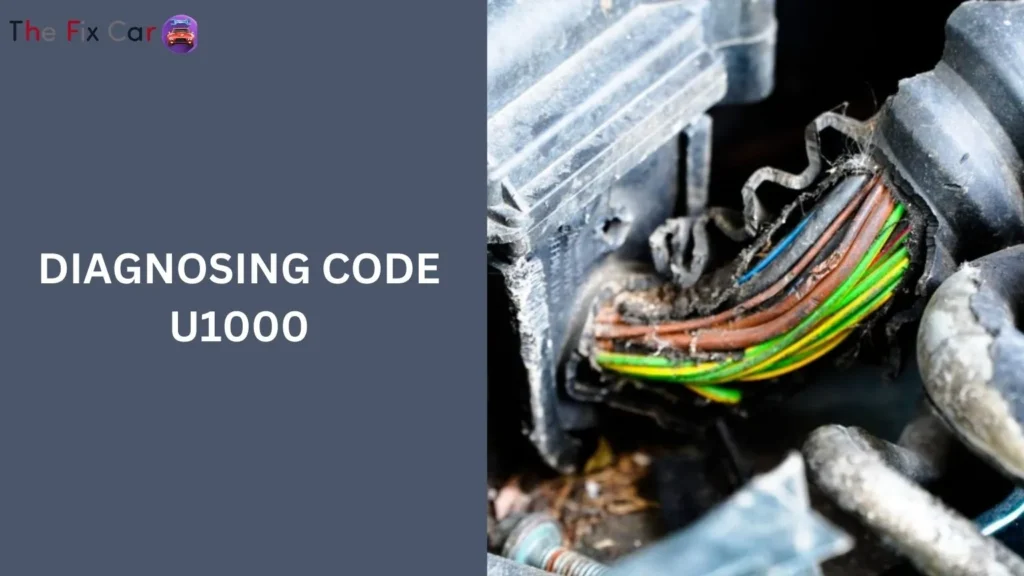
Diagnosing Code U1000 requires a systematic approach to identify the root cause of the communication issues within the vehicle’s Controller Area Network (CAN).
Here are the steps to effectively diagnose this code:
Using an OBD-II Scanner
An OBD-II scanner is an essential tool for diagnosing Code U1000. It helps identify which control modules are not communicating properly, providing a starting point for further investigation.
Visual Inspection
A thorough visual inspection of the vehicle’s wiring and connectors is crucial. Look for any signs of damage, corrosion, or loose connections that could be causing communication issues.
Checking Control Modules
Inspecting the control modules themselves can also provide insights. Ensure they are functioning correctly and haven’t sustained any damage that could impede communication.
Fixing Code U1000
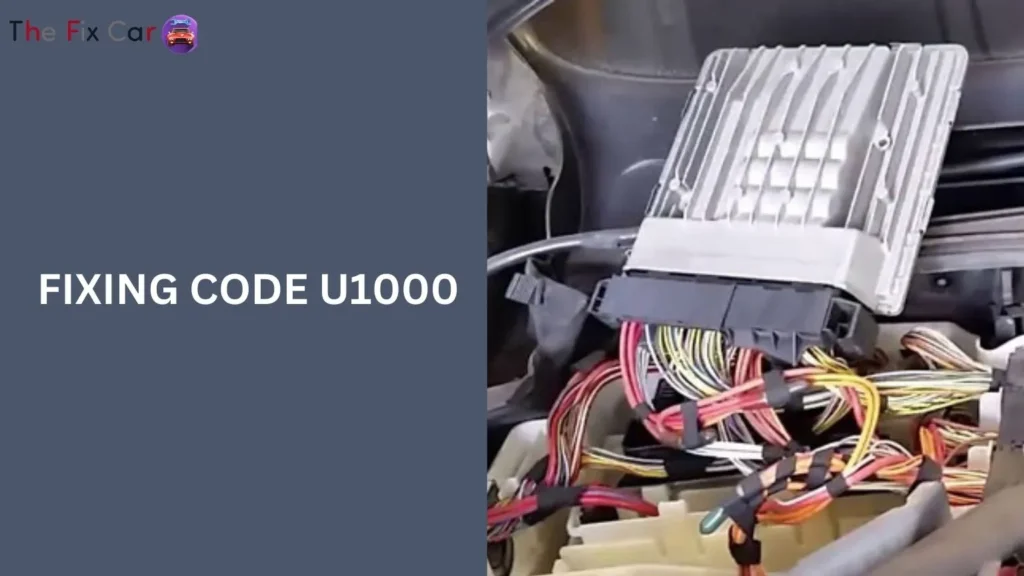
Fixing Code U1000 involves addressing the underlying communication issues within the vehicle’s Controller Area Network (CAN). Here’s a step-by-step guide to help you resolve this problem:
Verify the Code
Before starting any repairs, ensure that Code U1000 is the only code present. Clear the codes and see if it returns. This step helps confirm that the issue is not intermittent or caused by a temporary glitch.
Inspect Wiring and Connectors
Faulty wiring or connectors are common culprits for communication issues.
- Check for Damage: Look for any visible signs of damage such as cuts, fraying, or corrosion on the wiring and connectors.
- Secure Connections: Make sure all connectors are properly seated and secure. Loose or corroded connections can interrupt communication.
- Repair or Replace: If you find any damaged wires or connectors, repair or replace them as needed. Use appropriate tools and materials to ensure a secure and lasting fix.
Test and Replace Faulty Modules
Control modules themselves can be the source of the problem.
- Module Testing: Use a scan tool to communicate with each control module individually. Modules that fail to respond may be faulty.
- Update Software: Sometimes, updating the software on the control modules can resolve communication issues. Check with the manufacturer for any available updates.
- Replace Modules: If a module is found to be defective, replace it. Ensure the new module is correctly programmed and compatible with your vehicle.
Check the CAN Network
The integrity of the CAN network is crucial for communication between modules.
- Network Testing: Use a multimeter or oscilloscope to test the CAN network’s voltage levels and signal integrity. Compare your readings to the manufacturer’s specifications.
- Repair Network Issues: If you find any issues with the CAN network itself, such as a broken bus line or short circuit, repair them accordingly. This may involve replacing sections of the network or re-soldering connections.
Preventing Code U1000
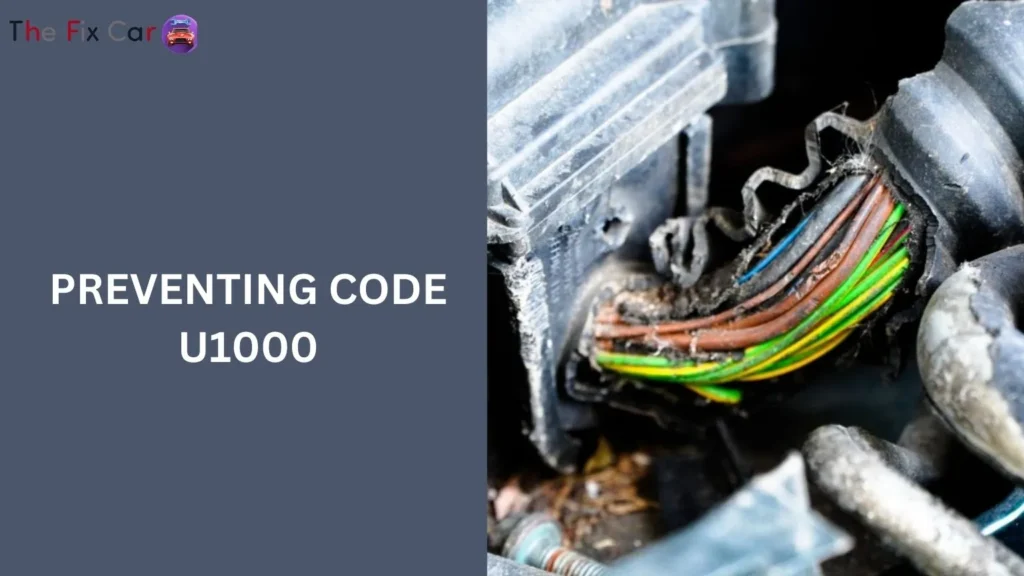
Preventing Code U1000 involves proactive maintenance and taking steps to ensure the integrity of your vehicle’s Controller Area Network (CAN). Here are some practical measures to help you avoid encountering this communication issue.
Regular Maintenance
Regular maintenance is key to preventing Code U1000. This includes routine checks of the vehicle’s wiring and control modules to catch any potential issues early.
Keeping Wiring Intact
Protecting your vehicle’s wiring from damage and corrosion is crucial. Avoid exposure to moisture and other elements that can degrade the wiring over time.
Updating Control Module Software
Keeping the software of your control modules up to date can prevent communication glitches. Manufacturers often release updates to address known issues and improve network stability.
DIY vs. Professional
When dealing with Code U1000, you might wonder whether to tackle the issue yourself or seek professional help.
Each approach has its advantages and potential drawbacks. Here’s a comparison to help you decide which option is best for your situation.
DIY Approach
Pros:
- Cost Savings: Fixing Code U1000 yourself can save you money on labor costs. If you have the necessary tools and skills, this can be a more budget-friendly option.
- Learning Experience: Handling the repair yourself can provide valuable hands-on experience and a deeper understanding of your vehicle’s systems.
- Flexibility: You can work on the issue at your own pace, without the constraints of shop hours or waiting for an appointment.
Cons:
- Time-Consuming: Diagnosing and fixing communication issues can be time-consuming, especially if you’re not familiar with the process. It may take longer to identify and resolve the problem.
- Risk of Mistakes: Without professional experience, you might miss underlying issues or make mistakes that could lead to further damage or unresolved problems.
- Tool and Equipment Costs: While you may save on labor, you might need to invest in specialized tools or diagnostic equipment, which can be expensive.
Professional Help
Pros:
- Expertise: Professionals have the experience and training to diagnose and fix Code U1000 efficiently. They are familiar with the common causes and advanced diagnostic procedures.
- Advanced Tools: Automotive technicians often have access to advanced diagnostic tools and equipment that can quickly pinpoint the issue and ensure accurate repairs.
- Warranty and Guarantees: Many repair shops offer warranties or guarantees on their work, providing peace of mind that the issue will be resolved correctly.
Cons:
- Cost: Professional repairs can be costly, especially if the issue is complex or requires significant labor. You will need to weigh this cost against the potential benefits.
- Time Constraints: Scheduling an appointment and waiting for your vehicle to be repaired may take time, which can be inconvenient if you need your vehicle urgently.
- Dependency: Relying on a professional means you won’t gain the hands-on experience or knowledge that comes from repairing yourself.
Cost of Repairing Code U1000
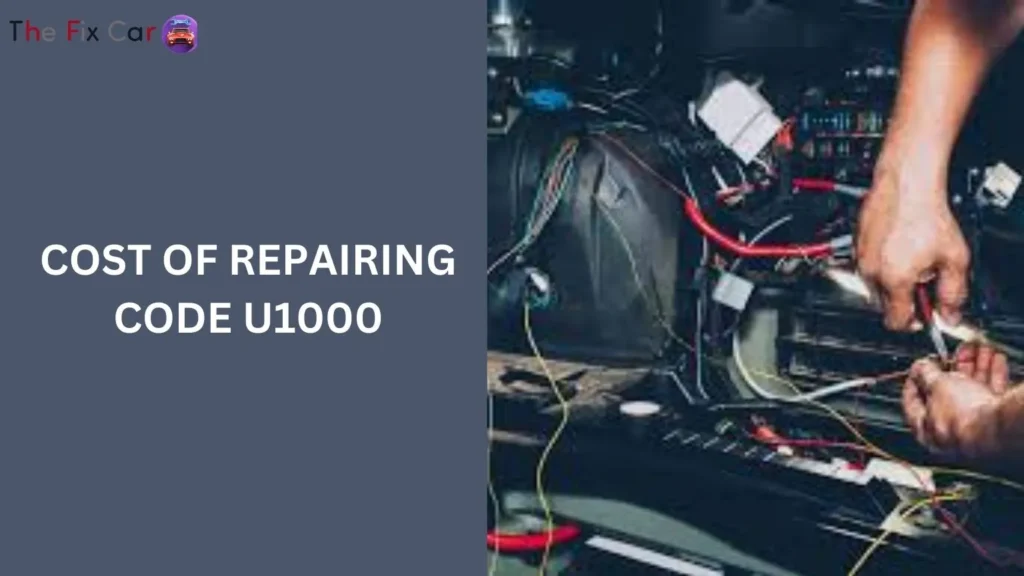
Repairing Code U1000 can vary widely in cost, depending on the root cause of the issue, the specific vehicle, and whether you choose a DIY approach or professional repair.
Here’s a breakdown of the potential costs involved.
Factors Affecting Cost
The cost of repairing Code U1000 depends on several factors, including the extent of the damage, the cost of replacement parts, and labor charges.
Average Repair Costs
On average, you can expect to pay between $100 and $1,000 for repairs. Simple fixes like replacing a wire are on the lower end while replacing control modules can be more expensive.
People also ask
What is the cause of U1000 code?
The U1000 code indicates a “CAN Communication Error,” meaning there’s a problem with the Controller Area Network (CAN) communication between various control modules in your vehicle. Common causes include:
Faulty Wiring or Connectors: Damaged or loose wiring and connectors can interrupt communication.
Defective Control Modules: A malfunctioning control module can fail to communicate properly.
Electrical Issues: Problems with the battery, alternator, or grounding can affect communication signals.
Software Problems: Outdated or corrupted software in the control modules may cause communication errors.
Can a bad battery cause a U1000 code?
Yes, a bad battery can cause a U1000 code. A weak or failing battery can lead to voltage drops, which can disrupt communication between the vehicle’s control modules on the CAN network.
What is error U1000 on Silverado 4WD?
Error U1000 on a Silverado 4WD indicates a “CAN Communication Error.” This means there is a problem with the Controller Area Network (CAN) communication between various control modules in the vehicle.
Common causes include faulty wiring, defective control modules, electrical issues, or software problems.
What is Nissan fault code U1000-01?
Nissan fault code U1000-01 indicates a “CAN Communication Error – No Communication with Control Module.”
It means there is a problem with communication between the vehicle’s control modules, often due to faulty wiring, connectors, or a malfunctioning module.
Conclusion
In Conclusion, Code U1000 is a common but potentially serious issue that affects the communication within your vehicle’s network. Understanding the causes, symptoms, and fixes can help you address the problem effectively.
Whether you choose to tackle the repair yourself or seek professional help, addressing Code U1000 promptly ensures your vehicle remains in top condition.
